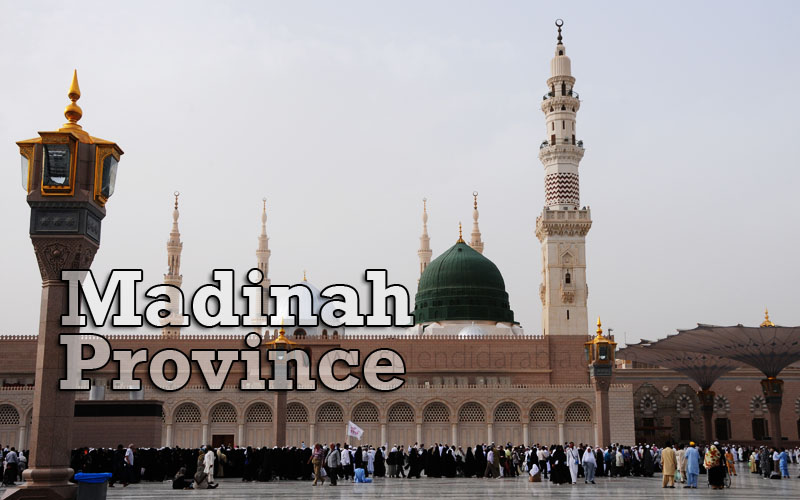Mada’in Salih (earlier known as Al-Hijr), about 1,111 km west-northwest of Riyadh and about 402 km northwest of Madinah, is one of the not-to-be-missed historical wonders in Saudi Arabia (and unsurprisingly of the whole world). Mada’in Salih occupies a strategic position on the ancient spice route (Frankincense Route). All caravans crossing the area passed by Al Hijr. This area was said to be very fertile with abundant water. Al Hijr was mentioned in various inscriptions of which some dated back to the sixth century BC, all the remaining architectural elements are dated to the Nabataean Civilization which comes between the 3rd century BC and the 1st century AD.
In July 2008, UNESCO declared Madain Salih a World Heritage Site.
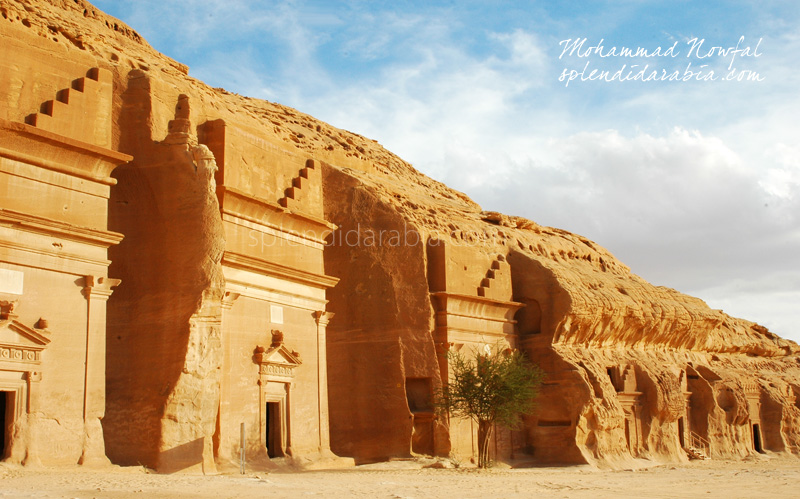

Southern part of Qasr al-Bint tombs
“And remember when He (God Almighty) made you (people of Thamud) successors after (the people of) Ad and gave you habitations in the land, you build for yourselves palaces in plains, and carve out homes in the mountains. So remember the graces (bestowed upon you) from God, and do not go about making mischief on the earth.” (Holy Qur’an – 7:74)
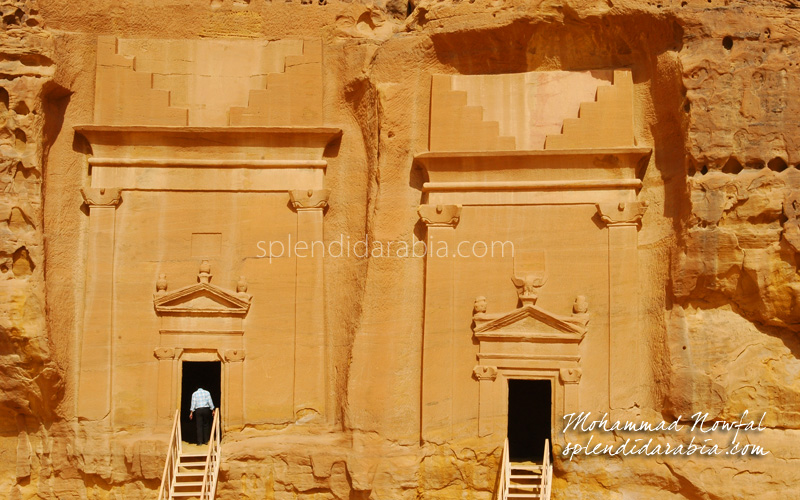

Nabataeans and People of Thamud
Nabataeans (3rd cent. B.C. – 1st cent. A.D.) were said to be mysterious people. Their origin is not agreed upon by historians though some conclude that they were of Arab origin. They did not leave any kind of written history other than some inscriptions of personal matters.
According to the Holy Qur’an, the area (Mada’in Salih) was occupied by the people of Thamud (since as early as the year 3000 B.C.) Thamud lived between the times of Prophet Noah and Moses (Peace be upon them)
The name “Al-Hijr” continued to be used until 14th century A.D. Thereafter the area became known as Mada’in Salih. While this name is attributed to one of the Abbasid rulers, many people came to associate it with the Prophet Salih, who is mentioned in the Qur’an as the Prophet who was sent to the people of Thamud.
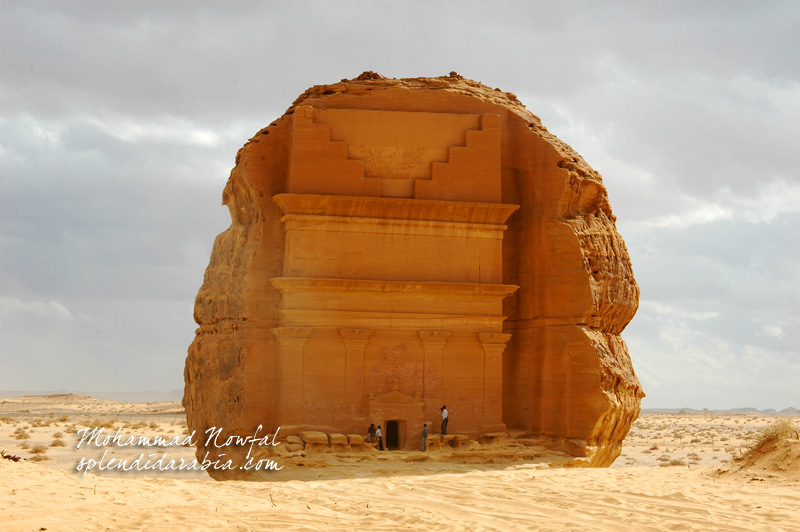

Qasr Al Farid
Al Farid means ‘the unique’. This tomb is called by the name because it was cut into a single huge rock. It is unique in its architectural element too. Though part of this tomb is unfinished, the brilliant carving with accurate proportion of this structure is a wonderful sight in the desert. Qasr Al Farid stays aloof in the soft sand from other tombs in the area.
Tombs in Mada’in Salih easily matched that of Petra in Jordan which was the capital of Nabataean Kingdom; Mada’in Salih was considered their second capital.
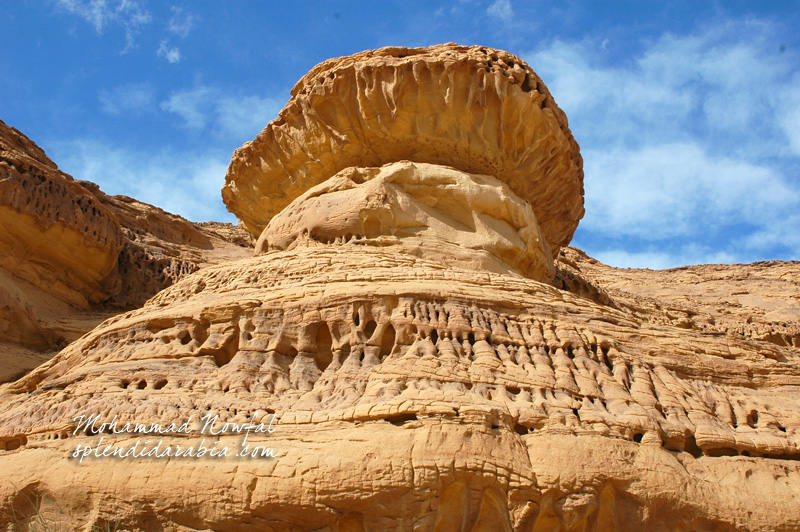

Rock formations
Rocks of different shapes and sizes give Mada’in Salih a charming beauty. I strongly felt that even without these human creative genius, Mada’in Salih would have been a queen of the desert.
The trip from Al Ula to Mada’in Salih is an unforgettable experience. Drive slowly and relish the whole panoramic view of the landscape
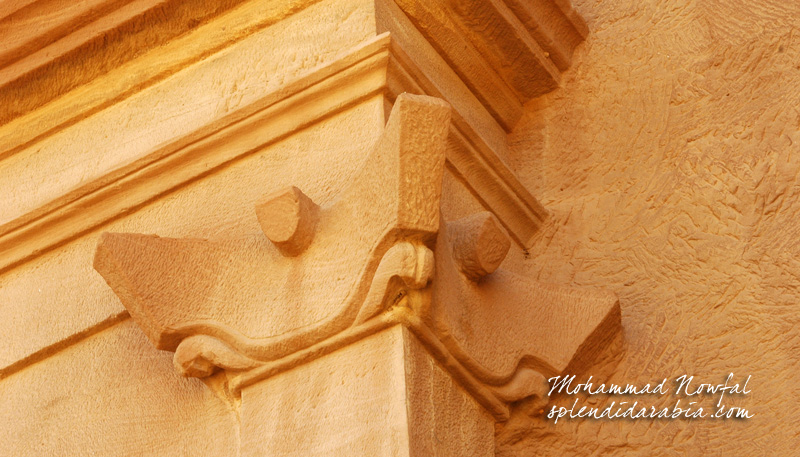

Precision Carvings
It is part of one of the most distinguished tombs in terms of its location and precise technique used in carving. It is recorded that Al-Hijr witnessed a period of great architectural development during the reign of Nabataean king Aretas IV (9 B.C. – 40 A.D.) when it became one of the great city of that age
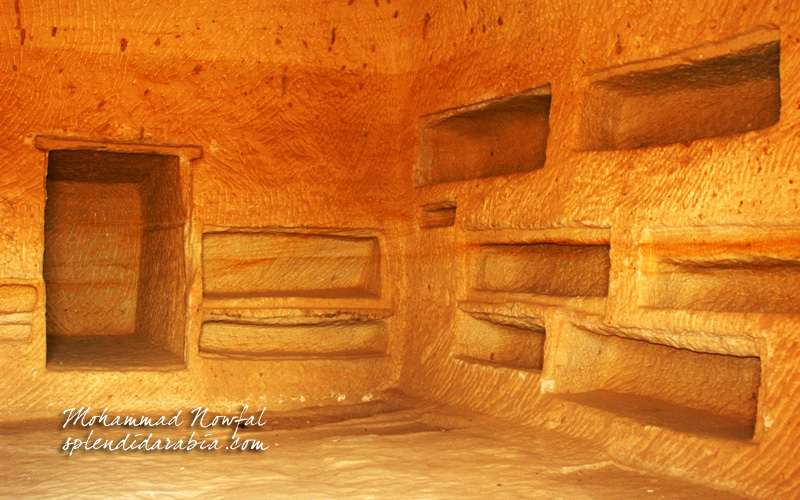

Burial chambers
The Interior of a tomb showing burial slots cut into the wall. Some of the inscriptions specify which members of the family might be buried in each side of the tomb.
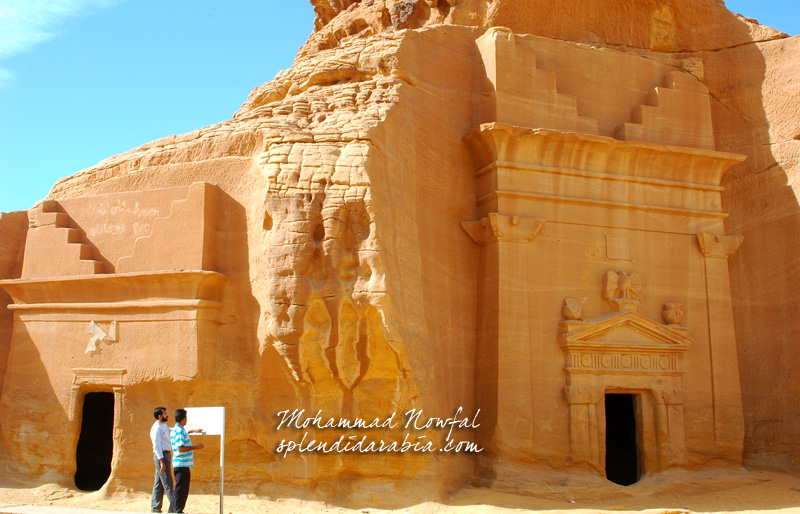

Sandstone
Mada’in Salih is distinguished by the unique formations of sandstone mountains. Sandstone is a sedimentary rock consisting of consolidated masses of sand deposited by moving water or by wind. The chemical constitution of sandstone is the same as that of sand; the rock is thus composed essentially of quartz. The cementing material that binds together the grains of sand is usually composed of silica, calcium carbonate, or iron oxide. The color of the rock is often determined largely by the cementing material, iron oxides causing a red or reddish-brown sandstone.
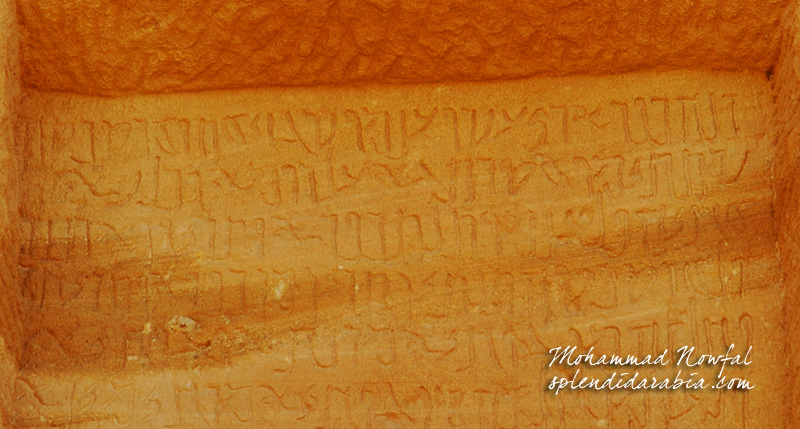

Nabataean Writings
Most of the Nabataean writings were in Aramaic which was the lingua franca of the Middle East after 1000 B.C.
The Nabataean script was said to be developed from Aramaic during the 2nd century BC. Stone inscriptions in the Nabataean script have been found in the various Nabataean cities including Mada’in Salih. Nabataean script later evolved into the Arabic alphabet. It is written from right to left in horizontal lines.
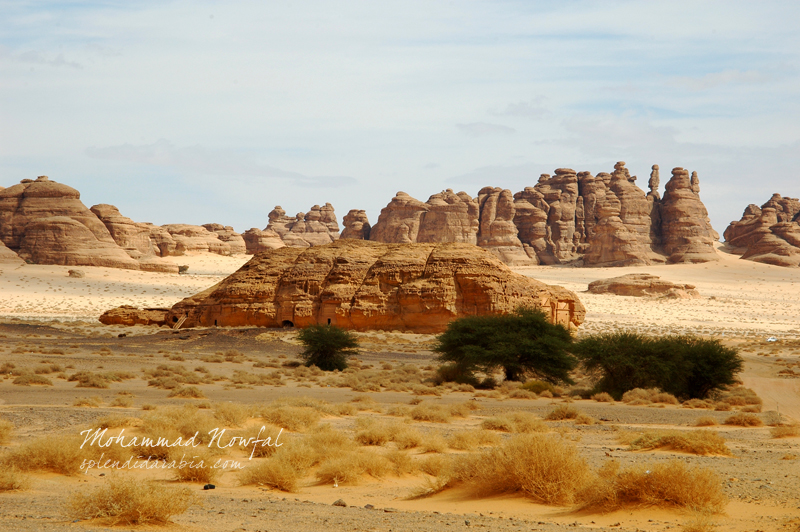

Mada’in Salih is a land that people of every walks of life can enjoy. The immense beauty that lies in its shapes and structures can leave profound memories in a tourist.
Mada’in Salih is a well protected area and visitors are required to provide their identification document (Iqama/Passport/National ID) for entry. Unlike previously, no prior permission is required. Moreover, only one person of the team required to present his identification. Night stay is not permitted in the area and so, visitors will have to leave the site before night fall.
In the year 2007, Mada’in Salih has been selected to the tentative list of UNESCO’s World Heritage Sites and later during the first week of July 2008 UNESCO approved Saudi Arabia’s first site of universal cultural value.

